Today Current Affairs: 30th July 2022 for UPSC IAS exams, State PSC exams, SSC CGL, State SSC, RRB, Railways, Banking Exam & IBPS, etc
Table of Contents
Swachh Sagar, Surakshit Sagar Campaign:
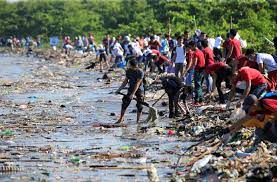
The Ministry of Earth Sciences has launched a Coastal Clean Up Drive under Swachh Sagar Surakshit Sagar Campaign to clean 75 beaches across the country in 75 days.
Swachh Sagar, Surakshit Sagar Campaign:
- It is the first-of-its-kind and longest running coastal cleanup campaign in the world with the highest number of people participating in it.
- The Campaign will culminate on “International Coastal Clean-up Day” (17th September 2022).
- The day aims to increase public awareness about the accumulation and negative impacts of litter in oceans, on coastlines and on beaches.
- Globally, “International Coastal Clean Up Day” is celebrated on the third Saturday of September, every year.
- Through this campaign, a mass behavioural change among the masses is intended by raising awareness about how plastic usage is destroying the marine life.
- A mobile app “Eco Mitram” has been launched to spread awareness about the campaign and also for the common people for voluntary registration for the beach cleaning activity.
Indigenous Aircraft Carrier (IAC) Vikrant:
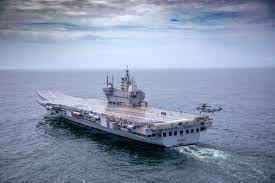
Indian Navy has created maritime history on July 28, 2022 by taking delivery of the prestigious Indigenous Aircraft Carrier (IAC) ‘Vikrant from her builder Cochin Shipyard Limited (CSL), Kochi.
- Designed by Indian Navy’s inhouse Directorate of Naval Design (DND) and built by CSL, a Public Sector Shipyard under Ministry of Shipping (MoS), the carrier is christened after her illustrious predecessor, India’s first Aircraft Carrier which played a vital role in the 1971 war.
- The 262 mtr long carrier has a full displacement of close to 45,000 tonnes which is much larger and advanced than her predecessor.
- The ship is powered by four Gas Turbines totaling 88 MW power and has a maximum speed of 28 Knots.
- Built at an overall cost of close to Rs. 20,000 Crs, the project has been progressed in three Phases of contract between MoD and CSL, concluded in May 2007, Dec 2014 and Oct 2019 respectively.
- The ship’s keel was laid in Feb 2009, followed by launching in Aug 2013.
- With an overall indigenous content of 76%, IAC is a perfect example of the nation’s quest for “Aatma Nirbhar Bharat” and provides thrust to Government’s ‘Make in India’ initiative.
- With the delivery of Vikrant, India has joined a select group of nations having the niche capability to indigenously design and build an Aircraft Carrier.
- The Indigenous Aircraft Carrier would soon be commissioned into the Indian Navy as Indian Naval Ship (INS) Vikrant which would bolster India’s position in the Indian Ocean Region (IOR) and its quest for a blue water Navy.
Hub And Spoke Model:

Under ‘Hub and Spoke Model’ meant for development of wheat Silos across the country, the Department of Food & Public Distribution has proposed to develop a capacity of 111.125 LMT of Silos at 249 locations across the country.
- With a view to modernize storage of food grains and to ramp-up the storage capacity for food grains in India, a new model ‘Hub & Spoke’ Model for implementation in Public Private Partnership (PPP) Mode has been proposed.
- The proposed Silos will operate under Design, Build, Fund, Own & Transfer (DBFOT) (FCI’s land) and Design, Build, Fund, Own & Operate (DBFOO) (Land of concessionaire/other agency) mode, through implementing agency i.e. Food Corporation of India (FCI).
- Hub and Spoke Model is a transportation system which consolidates the transportation assets from standalone locations referred to as “Spoke” to a central location named as “Hub” for long distance transportation.
- Hubs have a dedicated railway siding and container depot facility while the transportation from Spoke to Hub is undertaken through road and from Hub to Hub via rail.
- This model by harnessing the efficiency of railway siding, promotes cost efficiency through bulk storage & movement, reduces cost and time of handling and transportation and simplifies operational complexities in addition to economic development, infrastructure development & employment generation in the country.
RBI’s Digital Payments Index (RBI-DPI):
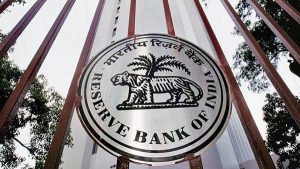
Recent data (March 2021-22) from the Index demonstrated significant growth, indicating rapid adoption and deepening of digital payments across the country.
About RBI-DPI:
- Launched in January 2021, it captures the extent of digitisation of payments across the country (with 2018 as a base year- score set as 100) and is published semi-annually.
- RBI has created a Payments Infrastructure Development Fund (PIDF)to encourage acquirers to deploy Points of Sale (PoS) infrastructure both physical and digital modes in tier-3 to tier-6 centres and northeastern states.
Coffee (Promotion and Development Bill), 2022:

The Ministry of Commerce and Industry is planning to replace the 80-year-old Coffee Act with the new Coffee (Promotion and Development Bill), 2022, which has been listed for the Monsoon Session of Parliament.
- The Coffee Act, 1942 was first introduced during World War II, in order to protect the struggling Indian coffee industry from the economic downturn caused by the war.
- The government is now trying to scrap the law because the substantive portion of the Coffee Act, 1942, which deals with pooling and marketing of the commodity, have become redundant/inoperative.
- The new legislation is now primarily concerned with promoting the sale and consumption of Indian coffee, including through e-commerce platforms, with fewer government restrictions.
- It also aims at encouraging further economic, scientific and technical research in order to align the Indian coffee industry with “global best practices.”
- While the Coffee Board continues to have limited control over marketing, exporters will still require a certificate from the statutory body.
Agriculture Census:
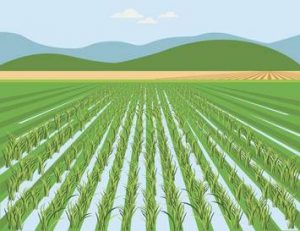
The Ministry of Agriculture & Farmers’ Welfare launched “The Eleventh Agricultural Census (2021-22).”
- This computation will bring huge benefits in a vast and agricultural country like India.
- Agriculture Census is conducted every 5 years, which is being undertaken now after delay due to the Covid – 19 Pandemic.
- Entire Census operation is conducted in three phases and operational holding is taken as a statistical unit at micro level for data collection.
- Based on the agriculture census data collected in three phases, the Department brings out three detailed reports analyzing trends on various parameters at All India and States/UTs level.
- District/Tehsil level reports are prepared by the respective States/UTs.
- Agricultural Census is the main source of information on a variety of agricultural parameters at a relatively minute level, such as the number and area of operational holdings, their size, class-wise distribution, land use, tenancy and cropping pattern, etc.
Eleventh Census:
- The field work of the agricultural census will start in August 2022.
- This is the first time that data collection for agricultural census will be conducted on smartphones and tablets, so that data is available in time.
- It includes:
- Use of digital land records like land title records and survey reports
- Collection of data through app/software using smartphone/tablet.
- Complete enumeration of all villages in states with non-land records during Phase-I as done in states having land records.
- Real time monitoring of progress and processing.
- Most of the States have digitized their land records and surveys, which will further accelerate the collection of agricultural census data.
- The use of digitized land records and the use of mobile apps for data collection will enable the creation of a database of operational holdings in the country.
Targets Released To Curb Malnutrition:

The Ministry of Women and Child Development has released targets to Curb Malnutrition in India.
- Aims at reducing stunting and under-nutrition (underweight prevalence) among children below 6 years by 2% each year.
- Aims to Reduce, low birth weight by 2% per annum, Anaemia among children between six and 59 months, as well as women and adolescent girls (15 to 49 years), by 3% per annum.
- Anaemia is a medical condition in which the blood doesn’t have enough healthy red blood cells.
- Highlighted the NFHS-5 Report, which comprises of detailed information on key domains of population, such as:
health and family welfare, fertility, family planning, infant and child mortality, maternal and child health, nutrition and anaemia, morbidity and healthcare, women’s empowerment etc.
Findings of the NFHS-5:
Data on Stunted Children:
- Meghalaya has the highest number of stunted children (46.5%), followed by Bihar (42.9%).
- Maharashtra has 25.6% wasted children (weight for height) — the highest — followed by Gujarat (25.1%).
- Jharkhand has the highest percentage of women (26%), between 15 and 49 years, who have a below-normal Body Mass Index (BMI).
Other Findings:
- The Total Fertility Rates (TFR), an average number of children per woman, has declined from 2.2 to 2.0 at the national level between NFHS-4 & 5.
- Overall Contraceptive Prevalence Rate (CPR) has increased substantially from 54% to 67% in the country.
- Institutional Births have increased substantially from 79% to 89% in India.
- Stunting has reduced from 38.4% to 35.5%, wasting from 21.0% to 19.3% and underweight prevalence is down from 35.8% to 32.1%.
- Women (15-49 years) whose BMI (Body Mass Index) is below normal has reduced from 22.9% in NFHS-4 to 18.7% in NFHS-5.
Deep Sea Mining:
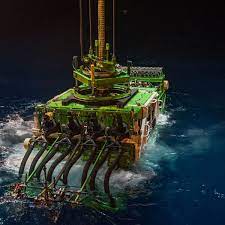
The Minister of State of Science & Technology presented a national science award to Indian scientists who conducted the world’s first locomotive trials of a deep-sea mining system in the central Indian ocean.
- The Minister presented the award at the 16th Foundation Day of the Ministry of Earth Sciences.
- Also, inaugurated a first-of-its-kind and state-of-art fully automated buoy-based coastal observation and water quality now casting system for the Indian Ocean which was developed by Indian National Centre for Ocean Information Services (INCOIS) and It’s the part of India’s Deep Ocean Mission.
Deep Sea Mining:
- The part of the ocean that lies below a depth of 200 meters is defined as the deep sea, and the process of extracting minerals from this area is known as deep-sea mining.
- According to International Seabed Authority, an agency under the United Nations Convention on the Law of the Sea (UNCLOS) for monitoring all activities related to mineral resources in the deep sea, the international seabed is the area that lies beyond the limits of national jurisdiction and represents around 50% of the total area of the world’s oceans.
- Deep Ocean Mission seeks to develop the technologies required for exploring and, then, extracting minerals in the deep seabed,
- It would develop a manned submersible that can carry three people to a depth of 6,000 meters in the ocean with a suite of scientific sensors and tools.
- It includes an integrated mining system that will be developed to bring up mineral ores from the deep sea.
- It will pursue technological innovations for exploration and conservation of deep-sea biodiversity through “bio-prospecting of deep-sea flora and fauna and studies on sustainable utilization of deep-sea bio-resources.
- The mission will seek to explore the prospects of deriving energy and freshwater from the ocean through “studies and detailed engineering design for offshore ocean thermal energy conversion (OTEC)-powered desalination plants.
Foreign Direct Investment:

Singapore and USA have emerged as top 2 sourcing nations in Foreign Direct Investment (FDI) equity flows into India in FY 2021-22 followed by Mauritius, Netherland and Switzerland.
- UNCTAD World Investment Report (WIR) 2022 has ranked India at 7th rank among the top 20 host economies for 2021, in terms of FDI.
Top Recipients:
India’s Statistics:
- India received the highest annual FDI inflows of USD 84,835 million in FY 21-22, overtaking last year’s FDI by USD 2.87 billion.
In 2021, FDI inflows increased from USD 74,391 million in FY 19-20 to USD 81,973 million in FY 20-21.
Top 5 FDI Sourcing Nation:
- Singapore: 27.01%
- USA: 17.94%
- Mauritius: 15.98%
- Netherland: 7.86%
- Switzerland: 7.31%
Top Sectors:
- Computer Software & Hardware: 24.60%
- Services Sector (Fin., Banking, Insurance, Non Fin/Business, Outsourcing, R&D, Courier, Tech. Testing and Analysis, Other): 12.13%
- Automobile Industry: 11.89%
- Trading: 7.72%
- Construction (Infrastructure) Activities: 5.52%
Top Destinations:
- Karnataka: 37.55%
- Maharashtra: 26.26%
- Delhi: 13.93%
- Tamil Nadu: 5.10%
- Haryana: 4.76%
- FDI Equity inflow in Manufacturing Sectors have increased by 76% in FY 2021-22 (USD 21.34 billion) compared to previous FY 2020-21 (USD 12.09 billion).




